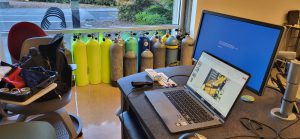
Cylinder Inspection Training: Why a Maintained Cylinder Is a Happy Cylinder
Uncover the importance of gas cylinder inspections and training. Dive deep into ensuring safety, boosting efficiency, and prolonging cylinder life.
Many countries have a rule requiring that high pressure cylinders undergo a hydrostatic requalification on a scheduled basis. This article refers to the Hydrostatic requalification of cylinders, but also mentions that during this requalification, a visual inspection must be performed. The Hydrostatic requalification periods may vary amongst high pressure cylinders, but a common time frame is every five years. This infers that a cylinder gets some visual inspection every five years, even though cylinders may be exposed to safety concerns countless times within a requalification period.
SCUBA diving organizations, being aware of their specific hazards, encourage annual visual inspections of diving cylinders. Due to the rigorous conditions of fire service organizations, The National Fire Protection Association (NFPA) states an inspection of the cylinder at the beginning of each duty period (1852 (7.1.2.4)). In the United States, The Occupational and Safety Health Administration (OSHA) requires that each employer ensures that gas cylinders are safe, which can be determined by a visual inspection (1910.101(a)). None of these rules or regulations explain what to look for during these visual inspections. How can a person know what conditions are considered a safety risk?
A proper high-pressure cylinder visual inspection course will be able to show a user/inspector what conditions are acceptable and what conditions could be a danger. The course also helps guide the user/inspector or requalifier on what the next steps are to ensure safety. Each type of cylinder has unique characteristics which must be monitored to ensure its structural integrity.
What users of a cylinder may not know is that a cylinder can pass a requalification process, but not be safe for use. The requalification process tests a cylinder’s ability to expand and contract. A cylinder can pass this type of test, but its structural integrity can still be unsafe. Therefore, it is imperative that a cylinder go through the hydrostatic requalification process and have a proper visual inspection.
The attached photo came from a cylinder which was sent to a hydrostatic test facility. It underwent the requalification and was stamped for another 5 years of service. Upon its return to the facility a formal visual inspection was conducted. When the “boot” was removed from the bottom of the cylinder this is what was found:
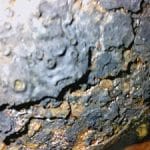
The facility should have conducted a cursory inspection of the cylinder before it was sent to the requalification facility. If they had removed the boot when they first accepted the cylinder I doubt they would have spent the time or money to have this cylinder tested. The requalifier should also have removed the boot when they conducted their visual assessment during the requalification process.
Each type of cylinder has unique characteristics which should be understood to conduct a proper visual inspection:
Steel cylinders are common in many industries. They include storage, fire suppression, SCUBA diving and compressor systems. They are susceptible to moisture from their storage environment and need to be closely monitored for issues of corrosion. One corrosion concern is the base. If the cylinder is sitting on a structure that can trap or transfer moisture, the base of the cylinder is subject to corrosion in an area rarely checked by most facilities. These cylinders are also commonly transported from location to location and have specific safety protocols; such as attaching caps during transportation and being properly secured during use.
Composite cylinders are entering many markets. They are light weight and handle greater pressures than their solid metal counterparts. That does not mean that they can handle the same type of environment or abuses. Users/inspectors must pay close attention to cuts and gouges, as even a small cut can render the cylinder condemnable. They also respond differently to impact damage, which might not be easy to detect without proper training. These cylinders also are highly susceptible to chemical exposure and a minor incident involving a chemical might condemn a composite cylinder.
Aluminum cylinders are common in the beverage, SCUBA and medical industries. Aluminum is softer than steel, but the walls on the aluminum cylinder are manufactured with a thicker dimension than steel or composite. Even with these thicker walls, aluminum cylinders are prone to cuts and gouges which may render them unsafe to use. Some aluminum cylinders also require specific testing during a hydrostatic requalification and a closer inspection of the threads before continued use.
Many cylinders are exposed to extreme conditions on a regular basis thus it is recommended that they are inspected more frequently than every five years. Some of these exposures may make a cylinder unsafe long before it is due for its next Hydrostatic requalification. A cylinder inspection course will train the user/inspector on the unique characteristics of each type of cylinder and how to recognize potential dangers before they become dangerous hazards. A proper course will review specific circumstances of each type of cylinder and train inspectors, users and requalifiers what concerns may be present and explain when to remove a cylinder from service.

I enjoy continuing to build the business based on safety since 1999. CTS focuses on the inspection of high pressure cylinders, the maintaining of the valves and basic maintenance of high pressure compressor systems. CTS stays current in techniques and tools to train both the new and novice employee. We publish articles, update training tools and have created an APP to assist during the inspection process.
#cylinder #safety #hazmat #training #cylinderinspectiontraining #cylindex

Uncover the importance of gas cylinder inspections and training. Dive deep into ensuring safety, boosting efficiency, and prolonging cylinder life.
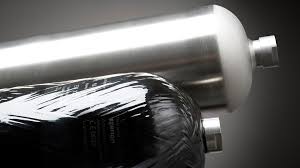
Is your composite cylinder showing signs of wear? Discover when to seek a professional repair service in our comprehensive guide.
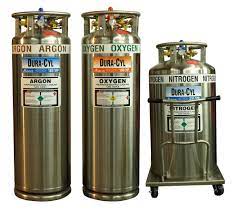
29 CFR 1910.101 intro Handling cryogenic cylinders involves working with extremely low-temperature gases that pose unique safety risks. To ensure the safe handling, storage, and transportation of these hazardous materials,
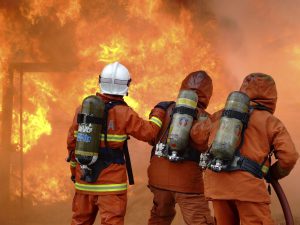
Introduction Firefighters encounter many risks while on duty, including hazardous materials and high pressure bottles. High pressure bottles are used for a variety of purposes in firefighting, including powering hydraulic